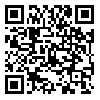Volume 14, Issue 1 (Spring 2022)
3 2022, 14(1): 23-40 |
Back to browse issues page
Download citation:
BibTeX | RIS | EndNote | Medlars | ProCite | Reference Manager | RefWorks
Send citation to:



BibTeX | RIS | EndNote | Medlars | ProCite | Reference Manager | RefWorks
Send citation to:
Sarpanah A, Abbasi K, Khatib S, Bagheri S, Zahmatkesh Y, Sabkara J, et al . Feeding habit survey of golden grey mullet, Chelon auratus (Risso, 1810) fingerling in the southern Caspian Seashores (Guilan province). 3 2022; 14 (1) :23-40
URL: http://jmb.ahvaz.iau.ir/article-1-968-en.html
URL: http://jmb.ahvaz.iau.ir/article-1-968-en.html
Alinaghi Sarpanah 
 , Keivan Abbasi
, Keivan Abbasi 
 , Sepideh Khatib
, Sepideh Khatib 
 , Siamak Bagheri
, Siamak Bagheri 
 , Yaghobali Zahmatkesh
, Yaghobali Zahmatkesh 
 , Jalil Sabkara
, Jalil Sabkara 
 , Mahdi Moradi
, Mahdi Moradi 
 , Fariba Madadi
, Fariba Madadi 


 , Keivan Abbasi
, Keivan Abbasi 
 , Sepideh Khatib
, Sepideh Khatib 
 , Siamak Bagheri
, Siamak Bagheri 
 , Yaghobali Zahmatkesh
, Yaghobali Zahmatkesh 
 , Jalil Sabkara
, Jalil Sabkara 
 , Mahdi Moradi
, Mahdi Moradi 
 , Fariba Madadi
, Fariba Madadi 

Abstract: (1381 Views)
The aim of this study was to determine the feeding indices, food spectrum and dominant food items of the studied fish fingerling in Talesh, Anzali, Kiashahr and Chaboksar shores of southern Caspian Sea in Guilan province seasonally and the fish fingerlings were captured with beach seine with mesh sizes 8 mm from winter 2020 to autumn 2021 and individuals (118 specimens) after anesthesia, were fixed into 5% buffered formalin and then was studied their stomach and the first intestine.The results on C. auratus with an averages of body weight 1.33±0.91, mean±S.D) g and total length 49.3±12.4 mm showed that the average of relative length of gut is 1.20±0.27, and vacuity index was calculated 4%. The average of fullness intensity was determined 624±325, 320±139, 535±421, 340±265 and 502±351 in spring until winter and totally, respectively and analysis of variance showed significant difference (F=5.81, p<0.01). Detritus, 27 genera of phytoplankton, 6 types of zooplankton and 6 types of benthic animals were identified in the stomach and the first section of intestine of studied fingerlings with a frequency of prescence 100, 100, 71 and 34 percent of all sutdied specimens, respectively. The phytoplankton genera of Cyclotella,Navicula, Nitzschia and Oscillatoriawere observed in 98, 67, 59 and 52%, respectively, Acartiafromzooplankton and in 46%, and Ammonia (belong to Foraminifera) and Gammaridaebothfrom benthic animals in 36 and 25% of studied individuals, respectively , had the most frequency. Also formed Nitzschiaand Navicula 32.6% and 32.3% of phytoplankton cells, respectively, the naupli stage of Copepods and Acartia 79.6% and 14.7% of zooplankton density, respectively and Gammaridae and Chironomidae(larvae) families 48% and 34.3% of number of benthos, respectively. There was observed seasonal change in presence and abundance of food items, too. In general, on basis of feeding indices, diversity and dominance of food items, golden grey mullet fingerling is benthos-zooplankton feeder and a euryphagous species and with good fullness intensity in Guilan coasts.
Type of Study: Research |
Subject:
Fisheries
Received: 2023/01/28 | Accepted: 2022/04/30 | Published: 2022/04/30
Received: 2023/01/28 | Accepted: 2022/04/30 | Published: 2022/04/30
| Rights and permissions | |
 |
This work is licensed under a Creative Commons Attribution-NonCommercial 4.0 International License. |



